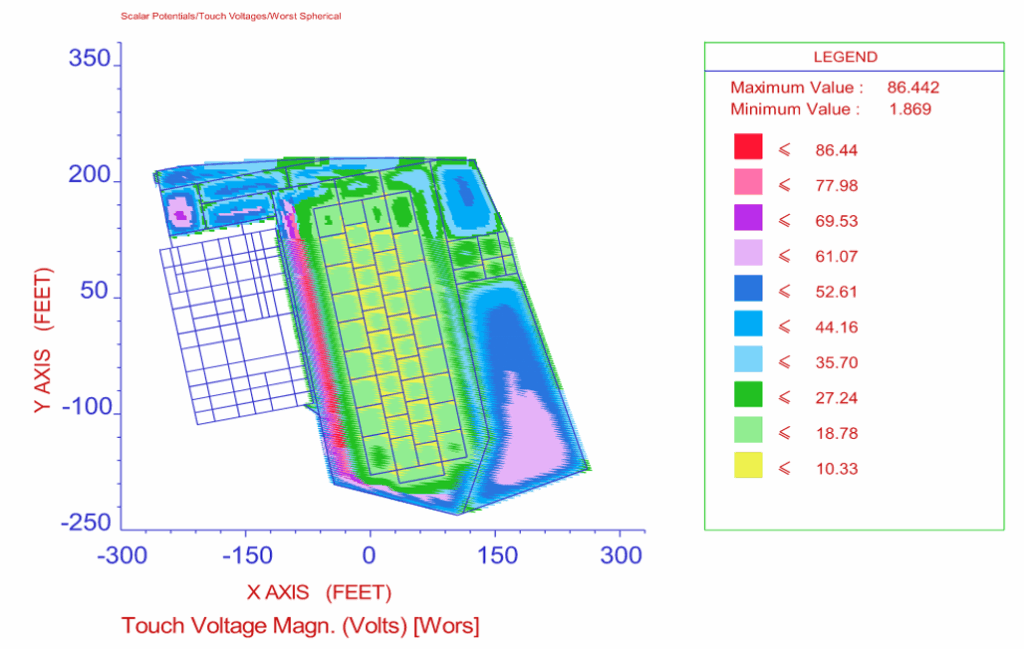Most renewable projects meet the minimum standard for grounding grids. But “passing” isn’t the same as “optimized.”
What is a Grounding Grid?
At NEI, we’ve seen how relying solely on standards can add unnecessary cost. In some cases, a passing grounding grid design uses far more conductor than needed which drives up CAPEX without improving performance.
A grounding grid is a network of interconnected conductors buried underground. Its job is to safely dissipate electrical currents into the earth which protects people, equipment, and the overall system.
Grounding grids are essential in substations, BESS facilities, and other large-scale power projects. Their purpose is safety first, but also equipment protection, voltage stabilization, and electromagnetic interference reduction.
Passing vs. Optimized
Not all grounding grid designs are created equal. Meeting the baseline “pass” threshold satisfies the standard, but it often leaves savings on the table.
When we model for optimized design, the difference is clear:
- Up to 33% reduction in grounding grid costs
- No compromise on safety or reliability
- More efficient use of conductor material
See the example below from a battery energy storage site:
Passing Design

Optimized Design

Why It Matters for Developers
In today’s market, where tariffs and OBBB pressures weigh on budgets, optimization isn’t optional. It’s a way to keep projects financially viable while maintaining the highest safety standards.
By designing smarter—not just to code—we help developers reduce costs, accelerate schedules, and prevent the kind of overbuild that erodes margins.
The Bottom Line
Grounding grids should do more than meet minimum standards. They should be designed to deliver safe, reliable, and cost-effective performance.
That’s where NEI’s experience makes the difference. With decades of renewable design expertise across solar, wind, and BESS, our engineers know how to balance compliance, constructability, and cost.
Ready to optimize your next project?
Connect with our team to learn how we can help you reduce hidden costs and deliver smarter renewable designs.
Talk to Our Team – NEI Electric Power Engineering, Inc.